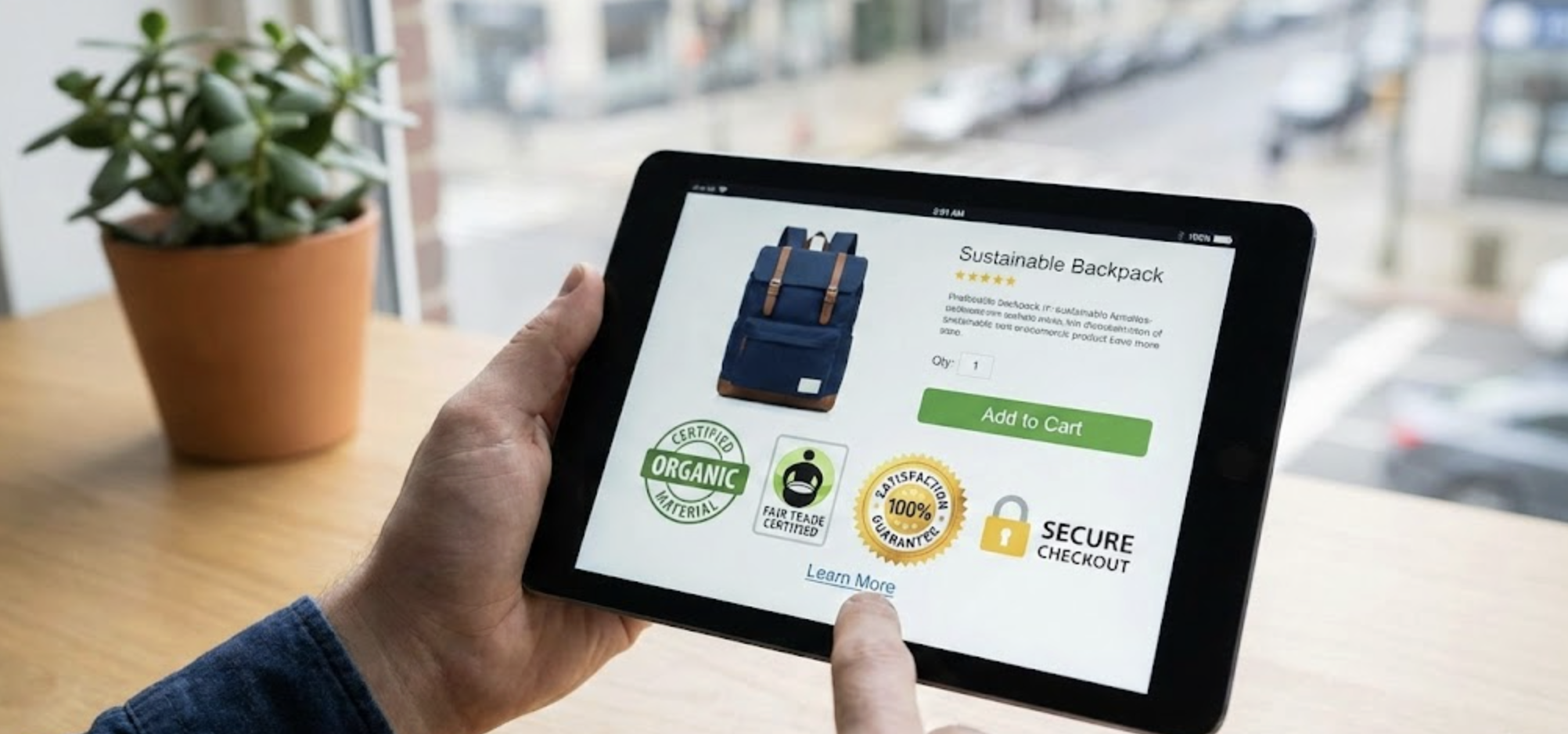

When customers shop online, they often do so with a mix of excitement and hesitation. Unlike a physical store, there’s no chance to touch, test, or immediately verify a product. Instead, trust becomes the deciding factor that can either close the sale or drive the shopper away. This is where certifications and guarantees step in. These trust-building elements act like digital reassurance, showing buyers that your store is credible, your products are reliable, and their purchase is protected.
In this article, we’ll explore what certifications and guarantees are, why trust matters so much in eCommerce, the different types you can use, and how to display them effectively on product pages. By the end, you’ll have a clear roadmap for using these trust signals to boost customer confidence and improve conversions.
At their core, certifications and guarantees serve the same purpose: to reassure potential buyers. However, they work in slightly different ways.
Together, certifications and guarantees work like a safety net. Certifications show that you’re trustworthy by industry standards, while guarantees prove that you’re confident enough in your products to stand behind them.
In a physical store, customers can interact with staff, inspect products, and walk away with their purchase in hand. Online shopping lacks those tangible reassurances, making trust the invisible currency of eCommerce. Without it, even the best products won’t sell.
Several psychological factors come into play:
This uncertainty often leads to cart abandonment. According to Baymard Institute, one of the top reasons customers abandon carts is a lack of trust in the site’s security or return process.
Adding trust signals like certifications and guarantees reduces this hesitation. For instance, a shopper is more likely to complete their purchase when they see a “30-Day Money-Back Guarantee” badge near the “Add to Cart” button. These small elements reassure customers that they’re making a safe, low-risk choice.
Real-world example: A case study by ConversionXL found that adding trust seals increased conversions by over 40% for some eCommerce stores. It’s proof that a little reassurance can have a big impact on the bottom line.
Not all certifications are created equal. The ones you choose should align with your business, industry, and audience expectations. Here are the most impactful categories:
Customers want to know their payment information is safe. Common trust badges include:
These assure customers that your site protects sensitive financial data.
For product-based businesses, especially in health, food, and beauty industries, quality certifications are critical:
These not only build trust but also align with customer values like sustainability and ethics.
Certain niches require specialized trust markers:
Displaying these on product pages shows compliance with strict industry regulations, instantly boosting credibility.
Pro tip: Only use certifications relevant to your products and market. Random or irrelevant seals can confuse customers and reduce trust rather than build it.
While certifications offer external validation, guarantees are your chance to build direct trust with shoppers. Here are the most effective ones:
The most powerful trust signal. Customers know they can get a full refund if unsatisfied. This reduces risk and removes the biggest purchase barrier.
Statements like “100% Satisfaction Guaranteed” or “Love it or your money back” work well for fashion, beauty, or subscription products. These reassure customers they won’t be stuck with something they don’t like.
Common in electronics or appliances, warranties show you’re confident in your product’s durability. Offering a longer warranty than competitors can be a major differentiator.
Customers hate complicated return processes. A clear “Free 30-Day Returns” badge simplifies decision-making. In fact, studies show that flexible return policies directly improve customer loyalty.
Guarantees work because they transfer risk away from the buyer and onto the seller. If your guarantee is strong and visible, buyers are more likely to feel safe completing their purchase.
Even the best certifications and guarantees won’t work if customers don’t see them. Strategic placement matters.
Place the most important trust badges (e.g., “Secure Checkout” or money-back guarantees) near the Add to Cart button. This ensures they’re visible at the critical decision-making point.
Include certifications like “USDA Organic” or “ISO Certified” directly in product descriptions. Customers scanning product details will see them naturally.
Payment security badges (Visa, Mastercard, PayPal logos) work best at checkout. They reinforce trust right before payment submission.
Less is often more: three to five carefully chosen trust signals are more effective than flooding a page with ten.
To maximize impact, follow these best practices:
Even well-intentioned trust signals can backfire if not used correctly. Here are pitfalls to steer clear of:
Trust is the foundation of every successful online store. Without it, even the most eye-catching products and competitive prices won’t convert hesitant visitors into buyers. Certifications and guarantees act as trust anchors, giving customers reassurance from both third-party validations and direct brand promises.
By carefully selecting the right certifications, offering strong guarantees, and displaying them in strategic places on your product pages, you can reduce buyer hesitation, lower cart abandonment, and ultimately boost sales. Think of them as your store’s silent salespeople—working around the clock to reassure shoppers and inspire confidence.
In a world where competition is fierce and attention spans are short, building trust isn’t optional—it’s essential. Start small, be authentic, and let your certifications and guarantees speak for the quality and reliability of your brand.


Aligning CTA copy with intent reduces friction, builds trust, and improves conversions across the entire funnel. Instead of pushing every visitor to buy immediately, effective CTAs meet users where they are and move them forward at a comfortable pace.
In this article, we’ll explore how autofill and validation work together, best practices for implementing them effectively, and how they directly improve accuracy, user confidence, and conversion rates.
This guide explores how to approach print-on-demand sample ordering strategically, so you can spot problems early, set realistic expectations, and confidently scale without unpleasant surprises from your suppliers.